Platform Configuration
Before you can start sending messages to Android, you will have to at least set up an FCM project and obtain a Google Maps key for Google Play Services based devices. This is all done via the Firebase Developer Console and Google Developer Console. Keep reading this document to know how to configure your push provider platform.
Creating a FCM Project
In 2016, Firebase Cloud Messaging replaced the GCM (Google's Cloud Messaging) and became Android's official push provider. To be able to send notifications you currently need to create a project in Firebase.
Start by signing in Firebase. In their developer page you will find a button like this one:
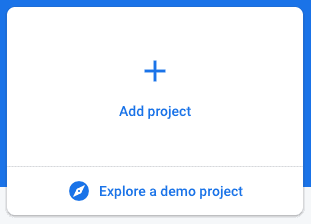
This will open a page like this one, where you should provide a name for your project:
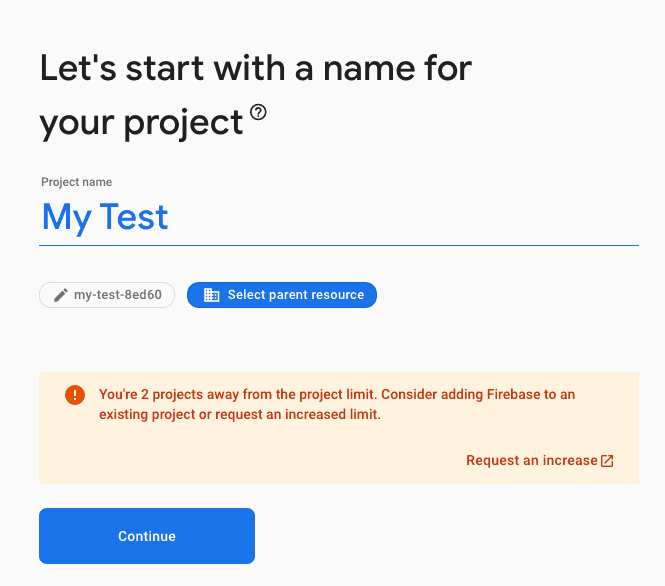
Firebase will generate an ID for you project, but you can also customize it:
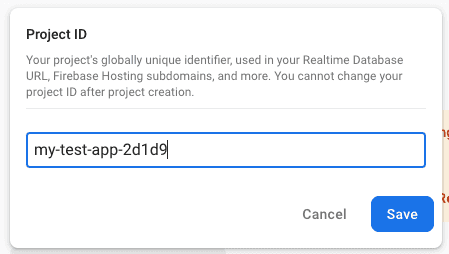
Depending on the capabilities you want to add to your project, you might need to enable or disable some options.
After creating your project, you will automatically be redirected to the project area where you can find a button like this one:

In the project settings page you will find a tab for Cloud Messaging:

Service Account
For newly created apps, we recommend using the Firebase Cloud Messaging API. This API uses a Service Account which you can manage in the Google Cloud Console, by clicking in Manage Service Accounts:
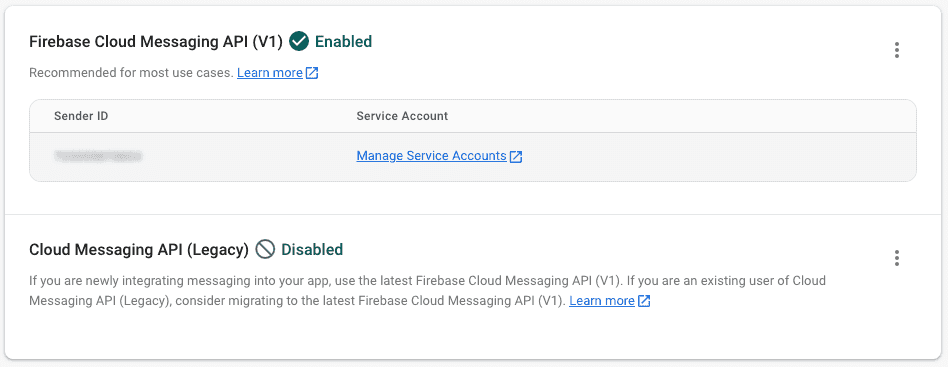
In this page you will find a list of service accounts (Firebase should create one automatically, but you can always create new ones):

You should then click in the service account, and navigate to the Keys tab:
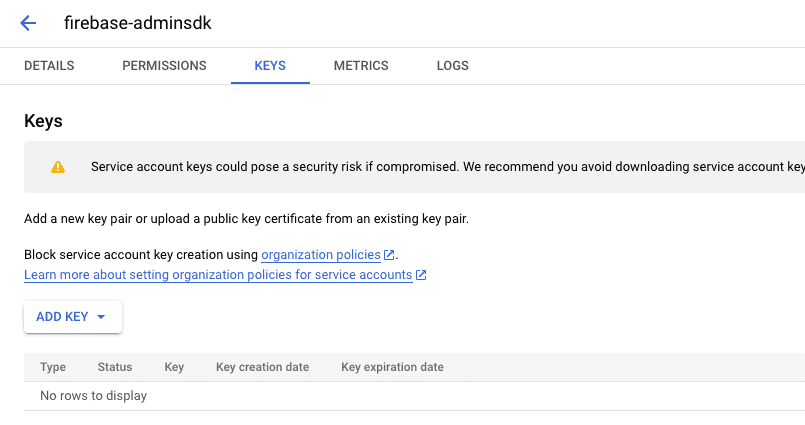
Go ahead and click in Add Key, which should open a window as the one below:
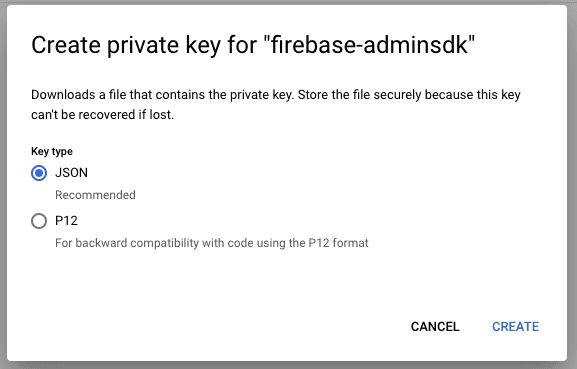
Select the JSON option and click Create. That should download a .json file to you computer.
You can then use that file and upload it to Notificare, in Settings > Services > FCM as the Service Account:

Saving this change, will create an entry as follows:

After that, you are ready to start sending remote notifications to Android devices.
Google Maps Key
Optionally if you want our library to handle Google Maps correctly you will need to enable access to this API in the Google's Developer console. This is only necessary if you intend to send notifications that use the map capabilities and if you are not already using yourself a Google Maps key in your app. If you do not want to use this functionality or you already use Google Maps in your app you can skip this configuration.
To enable this API and generate a API key, sign in into the Google's Developer Console and select the app you which to enable this API:

Then click in the Library menu item like shown below:

This will take you to a page where you find all the Google APIs. Locate and click in the Google Maps Android API link:
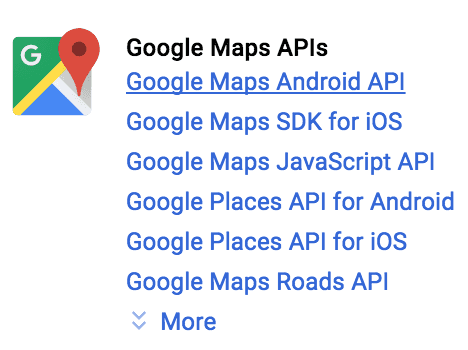
In this page you'll a short explanation about this API and the Enable button:

Clicking in Enable will allow your project access to this API and show you a page that looks like this:
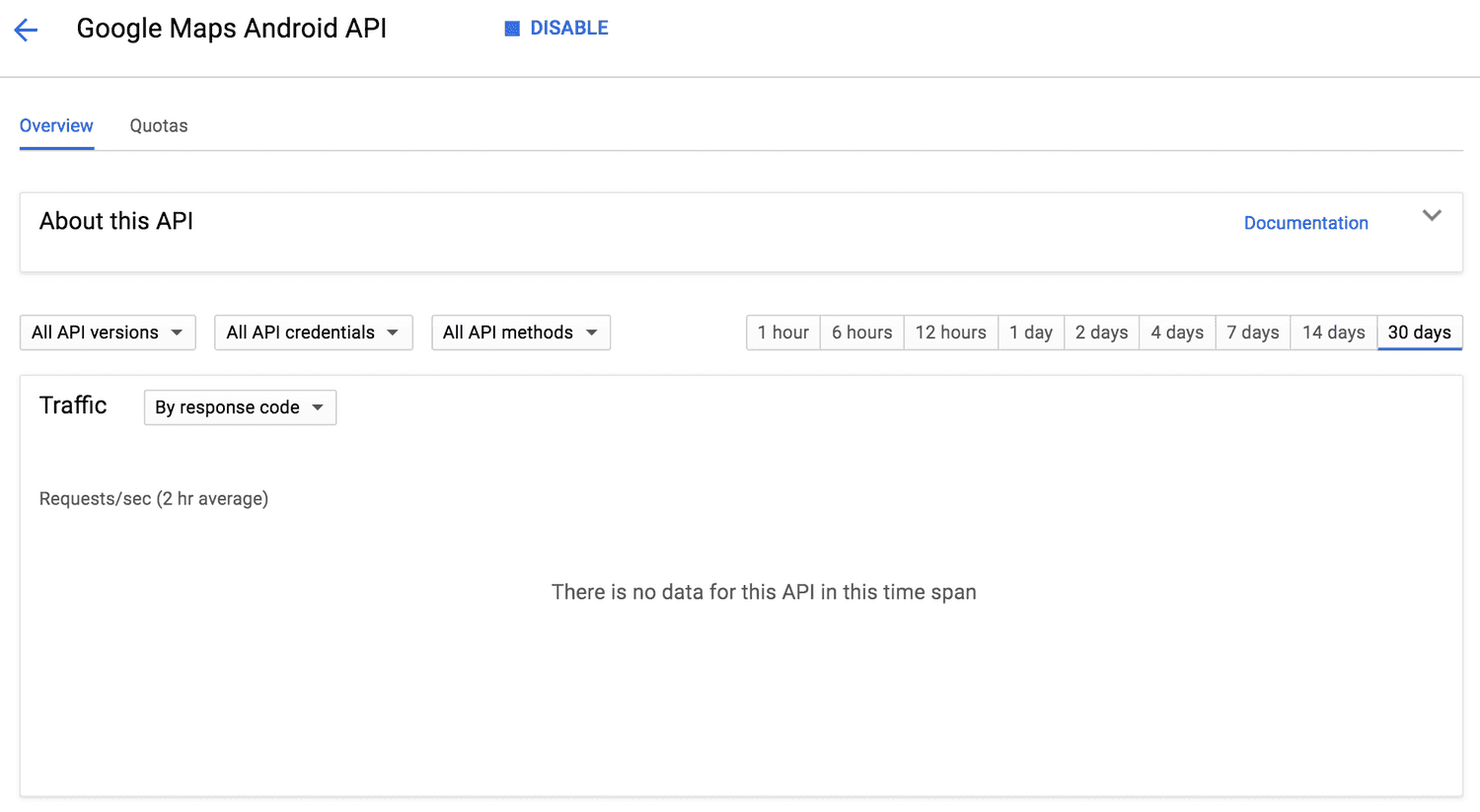
Then you are ready to create an API key that can actually be used in your app. In the menu on the left, click in Credentials:

In this page expand the Create Credentials menu and click in API key:

This will generate a key and display it in a window like the one below:
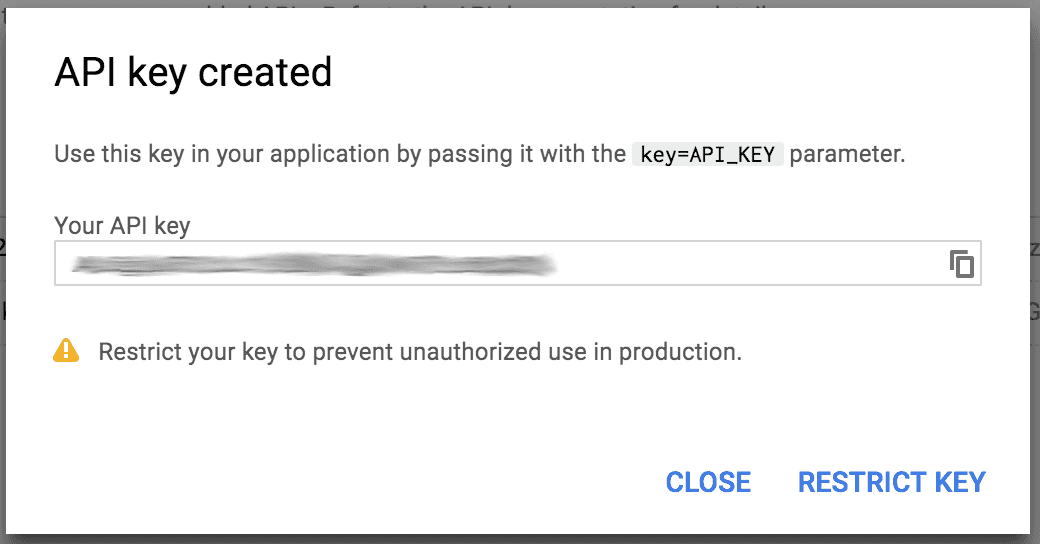
In production you might want to restrict the access of this key to your app but we will not cover this setup in this document.
Once you have generated an API key for Google Maps, go ahead an add an entry in your app's AndroidManifest.xml as follows:
<meta-data
android:name="com.google.android.geo.API_KEY"
android:value="ADD_THE_KEY_HERE" />You have now all the necessary platform configurations to start implementing our library. Keep reading our Implementation guides located here.